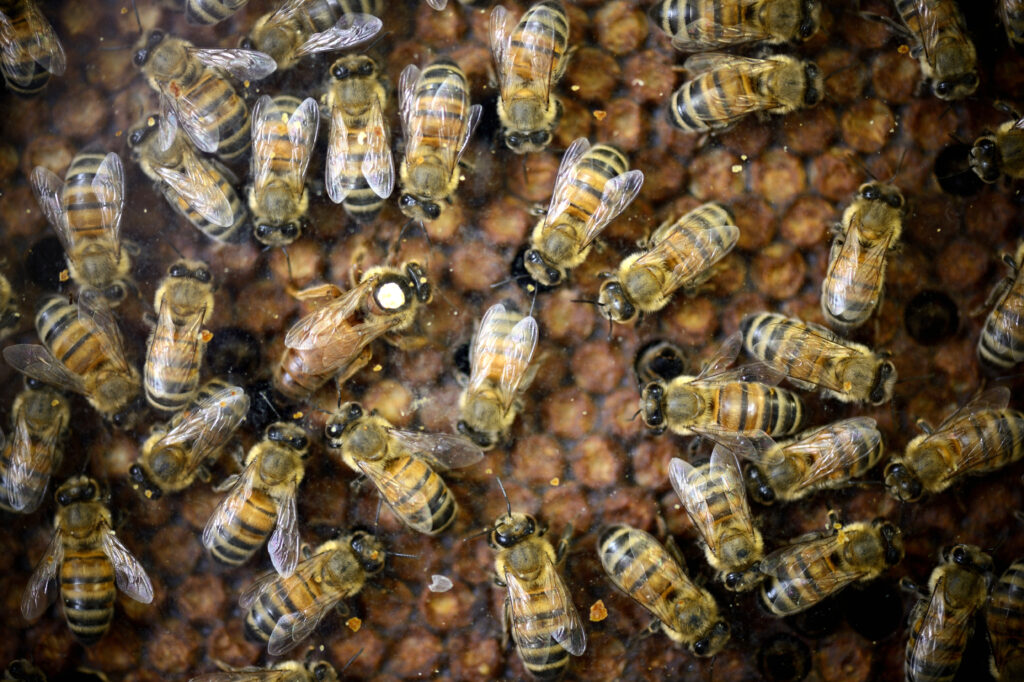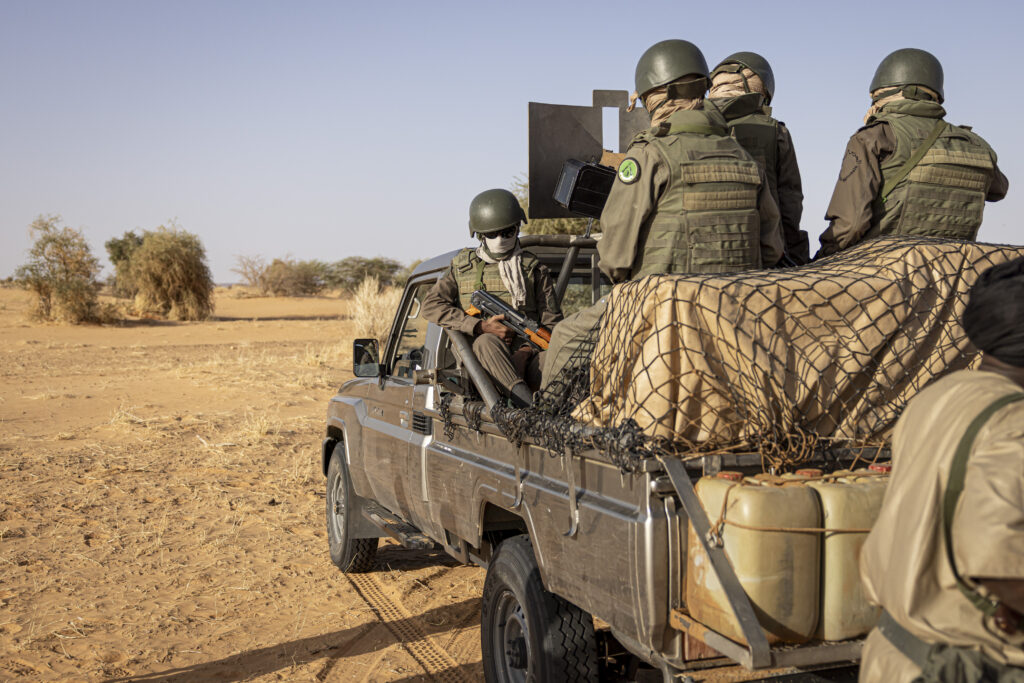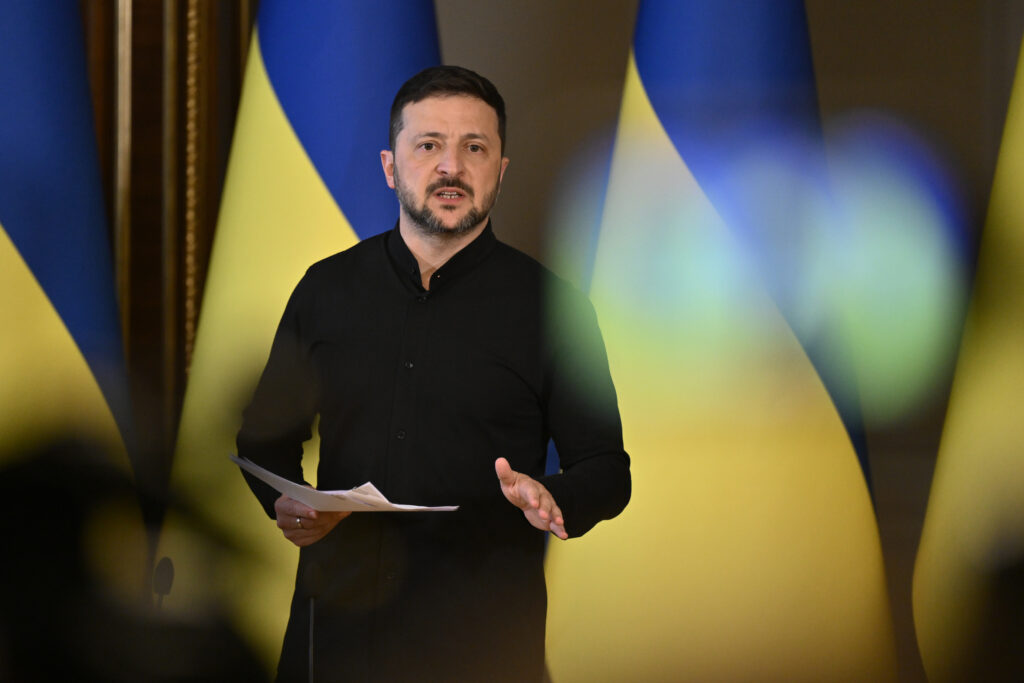Le patron d’Airbnb en quête de “nouveauté” et de “fraîcheur”
“La nouveauté, c’est cool. C’est excitant. Je veux être nouveau. Je veux être frais. Je veux être jeune”, lance Brian Chesky, le patron d’Airbnb, lors d’un entretien avec l’AFP mardi à Los Angeles, où il est venu présenter une nouvelle offre services à domicile sur l’application.A côté de la réservation de logements – qui n’a “plus rien de nouveau”, note-t-il – les utilisateurs vont désormais pouvoir trouver des professionnels des soins de beauté et bien-être ainsi que des traiteurs, prêts à venir dans leur location de vacances ou même chez eux.L’entreprise n’avait jamais tenté une telle diversification de ses sources de revenus depuis sa naissance en 2008 à San Francisco.”Pour rester pertinente, l’entreprise doit se développer et évoluer. Mais ça, c’est notre problème, cela n’intéresse personne”, continue Brian Chesky.”Le vrai problème que nous voulions résoudre, c’est qu’il est très difficile d’obtenir ces services”.Il raconte qu’au début, l’idée semblait juste “intéressante”, mais elle petit à petit devenue “essentielle”. “Nous avons soudain réalisé que cela pourrait entraîner un usage hebdomadaire, et non plus seulement annuel, de l’application”.Dans un premier temps les coiffeurs, masseurs et photographes sélectionnés par la plateforme seront disponibles dans 260 villes dans le monde. L’offre doit ensuite être étendue à d’autres lieux et d’autres services.Comme la garde d’enfants, “l’objectif ultime”. Car proposer des baby sitters sur l’application signifierait que les utilisateurs font vraiment “confiance” à l’entreprise.”Nous devons travailler pour mériter ce niveau de confiance. Nous n’en sommes pas encore là, mais c’est ce qui nous guide”, assure le dirigeant.- “Concierge parfait” -Etonnament, alors que l’intelligence artificielle (IA) générative domine tous les investissements et nouveaux produits dans la Silicon Valley depuis deux ans, Brian Chesky n’a quasiment pas mentionné la technologie à l’oeuvre dans ChatGPT.”Je n’en ai pas parlé, mais nous avons un nouvel agent IA pour le service client, et c’est le meilleur de toutes les applications de voyages”, se vante le dirigeant.Entraîné à partir de “centaines de millions ou même milliards” de données et informations relatives à des séjours de clients, il est d’abord déployé auprès des utilisateurs américains, avant de gagner d’autres pays, dans d’autres langues que l’anglais, dans les mois à venir.Mais Airbnb est plutôt attendu du côté des assistants IA capables de composer tout un séjour sur mesure, et de faire les réservations ensuite, comme celui de la start-up Mindtrip.Un secteur très convoité – Expedia, Booking ou Google essaient depuis des années de s’imposer comme la plateforme centrale des voyageurs.”Nous allons avoir plus de choses dans l’IA”, promet le patron. “A la fin nous deviendrons le concierge parfait pour les voyages et la vie quotidienne”.- Politique -En attendant, Airbnb fait face à des problèmes moins technologiques et plus politiques.Le groupe californien a dû prendre ses distances avec Joe Gebbia, son cofondateur qui a rejoint l’équipe Doge d’Elon Musk, chargée par Donald Trump de traquer les dépenses fédérales qu’elle considère inutiles.Des hôtes de la plateforme ont annoncé quitter Airbnb en réaction à cette situation – les méthodes de la commission sont largement jugées brutales et contre-productives par la gauche américaine.”Nous n’avons pas vu d’impact”, affirme Brian Chesky.”Je pense que le concept d’Airbnb dépasse largement les idées d’une personne ou d’une autre”, ajoute-t-il, avant de rappeler que Joe Gebbia n’est plus impliqué dans les activités quotidiennes d’Airbnb depuis deux ans.Le patron se montre aussi diplomate sur la question des politiques économiques du président américain, qui ont fait plonger les marchés et sèment l’incertitude dans tous les secteurs.Airbnb a observé une baisse du nombre de touristes étrangers venant aux Etats-Unis, mais “nous avons une forte capacité d’adaptation”, assure-t-il. “Si des voyageurs choisissent de partir en vacances dans leur propre pays, ils iront peut-être quand même dans des Airbnb”.”Cela dit, je pense qu’un monde où les frontières sont ouvertes et où les gens voyagent librement est certainement la meilleure chose qui soit”, lâche-t-il, “tant pour l’économie que pour les rencontres culturelles entre les communautés”.
Le patron d’Airbnb en quête de “nouveauté” et de “fraîcheur”
“La nouveauté, c’est cool. C’est excitant. Je veux être nouveau. Je veux être frais. Je veux être jeune”, lance Brian Chesky, le patron d’Airbnb, lors d’un entretien avec l’AFP mardi à Los Angeles, où il est venu présenter une nouvelle offre services à domicile sur l’application.A côté de la réservation de logements – qui n’a “plus rien de nouveau”, note-t-il – les utilisateurs vont désormais pouvoir trouver des professionnels des soins de beauté et bien-être ainsi que des traiteurs, prêts à venir dans leur location de vacances ou même chez eux.L’entreprise n’avait jamais tenté une telle diversification de ses sources de revenus depuis sa naissance en 2008 à San Francisco.”Pour rester pertinente, l’entreprise doit se développer et évoluer. Mais ça, c’est notre problème, cela n’intéresse personne”, continue Brian Chesky.”Le vrai problème que nous voulions résoudre, c’est qu’il est très difficile d’obtenir ces services”.Il raconte qu’au début, l’idée semblait juste “intéressante”, mais elle petit à petit devenue “essentielle”. “Nous avons soudain réalisé que cela pourrait entraîner un usage hebdomadaire, et non plus seulement annuel, de l’application”.Dans un premier temps les coiffeurs, masseurs et photographes sélectionnés par la plateforme seront disponibles dans 260 villes dans le monde. L’offre doit ensuite être étendue à d’autres lieux et d’autres services.Comme la garde d’enfants, “l’objectif ultime”. Car proposer des baby sitters sur l’application signifierait que les utilisateurs font vraiment “confiance” à l’entreprise.”Nous devons travailler pour mériter ce niveau de confiance. Nous n’en sommes pas encore là, mais c’est ce qui nous guide”, assure le dirigeant.- “Concierge parfait” -Etonnament, alors que l’intelligence artificielle (IA) générative domine tous les investissements et nouveaux produits dans la Silicon Valley depuis deux ans, Brian Chesky n’a quasiment pas mentionné la technologie à l’oeuvre dans ChatGPT.”Je n’en ai pas parlé, mais nous avons un nouvel agent IA pour le service client, et c’est le meilleur de toutes les applications de voyages”, se vante le dirigeant.Entraîné à partir de “centaines de millions ou même milliards” de données et informations relatives à des séjours de clients, il est d’abord déployé auprès des utilisateurs américains, avant de gagner d’autres pays, dans d’autres langues que l’anglais, dans les mois à venir.Mais Airbnb est plutôt attendu du côté des assistants IA capables de composer tout un séjour sur mesure, et de faire les réservations ensuite, comme celui de la start-up Mindtrip.Un secteur très convoité – Expedia, Booking ou Google essaient depuis des années de s’imposer comme la plateforme centrale des voyageurs.”Nous allons avoir plus de choses dans l’IA”, promet le patron. “A la fin nous deviendrons le concierge parfait pour les voyages et la vie quotidienne”.- Politique -En attendant, Airbnb fait face à des problèmes moins technologiques et plus politiques.Le groupe californien a dû prendre ses distances avec Joe Gebbia, son cofondateur qui a rejoint l’équipe Doge d’Elon Musk, chargée par Donald Trump de traquer les dépenses fédérales qu’elle considère inutiles.Des hôtes de la plateforme ont annoncé quitter Airbnb en réaction à cette situation – les méthodes de la commission sont largement jugées brutales et contre-productives par la gauche américaine.”Nous n’avons pas vu d’impact”, affirme Brian Chesky.”Je pense que le concept d’Airbnb dépasse largement les idées d’une personne ou d’une autre”, ajoute-t-il, avant de rappeler que Joe Gebbia n’est plus impliqué dans les activités quotidiennes d’Airbnb depuis deux ans.Le patron se montre aussi diplomate sur la question des politiques économiques du président américain, qui ont fait plonger les marchés et sèment l’incertitude dans tous les secteurs.Airbnb a observé une baisse du nombre de touristes étrangers venant aux Etats-Unis, mais “nous avons une forte capacité d’adaptation”, assure-t-il. “Si des voyageurs choisissent de partir en vacances dans leur propre pays, ils iront peut-être quand même dans des Airbnb”.”Cela dit, je pense qu’un monde où les frontières sont ouvertes et où les gens voyagent librement est certainement la meilleure chose qui soit”, lâche-t-il, “tant pour l’économie que pour les rencontres culturelles entre les communautés”.
Abeilles et pesticides: la science face au retour possible des néonicotinoïdes
Le laboratoire de l’Inrae d’Avignon a des allures de ruche : telles des ouvrières, les scientifiques s’activent dans le jardin pour prélever des dizaines d’abeilles et mesurer l’impact des pesticides, alors que les néonicotinoïdes pourraient revenir dans les cultures françaises.Cela fait une dizaine d’années que l’unité de recherche “Abeilles et Environnement” développe ce type de test unique au monde, qui a permis de prouver les conséquences néfastes des pesticides, y compris des néonicotinoïdes, sur des colonies de butineuses.Freddie-Jeanne Richard, directrice de recherche en biologie et comportement de l’abeille dans cet institut, travaille avec des abeilles mellifères naissantes, qu’elle met par dizaine dans des “cagettes” en plexiglas équipées de tubes remplis d’une solution sucrée.Tout juste sorties de leur alvéole, elles sont exposées à un pesticide par l’alimentation. “On a pu démontrer que les pesticides (…) aux doses qu’on utilise actuellement, ont des impacts non létaux (qui n’entraînent pas la mort) sur les pollinisateurs”, explique-t-elle.Cependant, l’utilisation de néonicotinoïdes, même en faibles quantités, peut “altérer le comportement des abeilles”, ce qui peut avoir “des répercussions à l’échelle de l’individu ou de la colonie”, affirme la chercheuse.Concrètement, les néonicotinoïdes, tout comme d’autres pesticides ou fongicides, peuvent avoir des effets sur “les capacités de communication et d’orientation des abeilles”, notamment des ouvrières qui sortent régulièrement de la ruche pour nourrir la colonie et s’assurer de la survie du couvain.Les œufs, les larves et les nymphes peuvent aussi être contaminés par les abeilles rentrées en contact avec le pesticide “lorsqu’elles vont butiner, récolter du nectar ou du pollen sur les fleurs”, explique Freddie-Jeanne Richard. La reine, qui détient le monopole de la reproduction au sein de la ruche, peut également voir ses capacités altérées et ainsi mettre à mal tout le développement de la colonie.- Des ruches vides -Après avoir été exposées à un pesticide, les abeilles sont marquées individuellement d’une puce. Julie Fourrier, chargée de mission en écotoxicologie expérimentale, les manipule avec précaution à l’aide d’une pince d’entomologie.Avec seulement un petit point de colle, elle dispose sur leur dos une puce RFID (identification par radiofréquence) d’un millimètre à peine. Elles peuvent également être équipées d’un minuscule QR-code, un dispositif plus récent. “L’arrivée de cette technologie nous a permis des avancées majeures au niveau du suivi de l’activité des abeilles”, souligne-t-elle.Vêtus de leur combinaison, les scientifiques les relâchent ensuite à environ un kilomètre de leur colonie, pour suivre leur capacité à retourner à la ruche. Cette dernière est équipée d’un compteur rattaché aux puces, qui enregistre le moment précis d’entrée et de sortie des butineuses.Les abeilles ne revenant pas “seront des abeilles perdues qui finiront par mourir sur le terrain, puisqu’une abeille domestique ne peut pas vivre en dehors de sa colonie”, explique Julie Fourrier.Cette technologie a révolutionné la recherche sur l’impact des néonicotinoïdes sur les abeilles. “Cela nous a permis de répondre aux inquiétudes des apiculteurs” qui constataient des ruches complètement vides, du fait d’abeilles désorientées par l’effet des pesticides sur leur système nerveux.C’est pourquoi, pour Cédric Alaux, directeur de recherche en biologie et protection des abeilles à l’Inrae, si l’Assemblée nationale adopte le texte proposé par le sénateur Les Républicains Laurent Duplomb, qui doit être examiné dans l’hémicycle fin mai, nous pourrions assister à “un retour en arrière, alors qu’il y a plein de preuves de (la) toxicité” des néonicotinoïdes.Cette proposition de loi qui entend “lever les contraintes à l’exercice du métier d’agriculteur” vise à autoriser par dérogation et pour certaines filières (noisette, betterave) le recours à un type de néonicotinoïde: l’acétamipride. Ce produit est interdit en France depuis 2018, après une longue mobilisation des apiculteurs et de la communauté scientifique.”La toxicité des néonicotinoïdes a été prouvée vingt fois, à la fois en condition de laboratoire mais aussi sur le terrain”, souligne Cédric Alaux, déterminé à continuer d’améliorer ces technologies pour de nouvelles avancées destinées à protéger ces précieux insectes.
Abeilles et pesticides: la science face au retour possible des néonicotinoïdes
Le laboratoire de l’Inrae d’Avignon a des allures de ruche : telles des ouvrières, les scientifiques s’activent dans le jardin pour prélever des dizaines d’abeilles et mesurer l’impact des pesticides, alors que les néonicotinoïdes pourraient revenir dans les cultures françaises.Cela fait une dizaine d’années que l’unité de recherche “Abeilles et Environnement” développe ce type de test unique au monde, qui a permis de prouver les conséquences néfastes des pesticides, y compris des néonicotinoïdes, sur des colonies de butineuses.Freddie-Jeanne Richard, directrice de recherche en biologie et comportement de l’abeille dans cet institut, travaille avec des abeilles mellifères naissantes, qu’elle met par dizaine dans des “cagettes” en plexiglas équipées de tubes remplis d’une solution sucrée.Tout juste sorties de leur alvéole, elles sont exposées à un pesticide par l’alimentation. “On a pu démontrer que les pesticides (…) aux doses qu’on utilise actuellement, ont des impacts non létaux (qui n’entraînent pas la mort) sur les pollinisateurs”, explique-t-elle.Cependant, l’utilisation de néonicotinoïdes, même en faibles quantités, peut “altérer le comportement des abeilles”, ce qui peut avoir “des répercussions à l’échelle de l’individu ou de la colonie”, affirme la chercheuse.Concrètement, les néonicotinoïdes, tout comme d’autres pesticides ou fongicides, peuvent avoir des effets sur “les capacités de communication et d’orientation des abeilles”, notamment des ouvrières qui sortent régulièrement de la ruche pour nourrir la colonie et s’assurer de la survie du couvain.Les œufs, les larves et les nymphes peuvent aussi être contaminés par les abeilles rentrées en contact avec le pesticide “lorsqu’elles vont butiner, récolter du nectar ou du pollen sur les fleurs”, explique Freddie-Jeanne Richard. La reine, qui détient le monopole de la reproduction au sein de la ruche, peut également voir ses capacités altérées et ainsi mettre à mal tout le développement de la colonie.- Des ruches vides -Après avoir été exposées à un pesticide, les abeilles sont marquées individuellement d’une puce. Julie Fourrier, chargée de mission en écotoxicologie expérimentale, les manipule avec précaution à l’aide d’une pince d’entomologie.Avec seulement un petit point de colle, elle dispose sur leur dos une puce RFID (identification par radiofréquence) d’un millimètre à peine. Elles peuvent également être équipées d’un minuscule QR-code, un dispositif plus récent. “L’arrivée de cette technologie nous a permis des avancées majeures au niveau du suivi de l’activité des abeilles”, souligne-t-elle.Vêtus de leur combinaison, les scientifiques les relâchent ensuite à environ un kilomètre de leur colonie, pour suivre leur capacité à retourner à la ruche. Cette dernière est équipée d’un compteur rattaché aux puces, qui enregistre le moment précis d’entrée et de sortie des butineuses.Les abeilles ne revenant pas “seront des abeilles perdues qui finiront par mourir sur le terrain, puisqu’une abeille domestique ne peut pas vivre en dehors de sa colonie”, explique Julie Fourrier.Cette technologie a révolutionné la recherche sur l’impact des néonicotinoïdes sur les abeilles. “Cela nous a permis de répondre aux inquiétudes des apiculteurs” qui constataient des ruches complètement vides, du fait d’abeilles désorientées par l’effet des pesticides sur leur système nerveux.C’est pourquoi, pour Cédric Alaux, directeur de recherche en biologie et protection des abeilles à l’Inrae, si l’Assemblée nationale adopte le texte proposé par le sénateur Les Républicains Laurent Duplomb, qui doit être examiné dans l’hémicycle fin mai, nous pourrions assister à “un retour en arrière, alors qu’il y a plein de preuves de (la) toxicité” des néonicotinoïdes.Cette proposition de loi qui entend “lever les contraintes à l’exercice du métier d’agriculteur” vise à autoriser par dérogation et pour certaines filières (noisette, betterave) le recours à un type de néonicotinoïde: l’acétamipride. Ce produit est interdit en France depuis 2018, après une longue mobilisation des apiculteurs et de la communauté scientifique.”La toxicité des néonicotinoïdes a été prouvée vingt fois, à la fois en condition de laboratoire mais aussi sur le terrain”, souligne Cédric Alaux, déterminé à continuer d’améliorer ces technologies pour de nouvelles avancées destinées à protéger ces précieux insectes.
Protection racket? Asian semiconductor giants fear looming tariffs
Inside one of South Korea’s oldest semiconductor research institutes, the cleanrooms and workshops are calm and immaculate, but outside the Seoul National University campus, a chip storm is brewing.Last month, Washington announced a national security probe into imports of semiconductor technology, which could put the industry in the crosshairs of President Donald Trump’s trade bazooka and inflict potentially devastating levies.For chipmaking powerhouses South Korea and Taiwan, the consequences could be enormous. South Korea is home to Samsung Electronics and SK hynix, while Taiwan hosts the world’s largest contract chipmaker, TSMC. Collectively, they produce a significant chunk of high-end chips that have become the lifeblood of the global economy, powering everything from smartphones to missiles.Taiwan exported $7.4 billion worth of semiconductors to the United States in 2024, while South Korea’s exports surged to $10.7 billion, a historic high. Experts say the spectre of looming tariffs has spurred stockpiling, with fears levies will drive up consumer prices and hurt chipmakers.The clear intention of Trump’s policies is to force the Asian chip giants to relocate production stateside, a former engineer at Taiwanese chip firm MediaTek told AFP.”TSMC going overseas to the US to build fabs is like paying protection money,” they said, adding that the projects barely made a profit with margins “super low” in high-cost America. “From the American point of view, it’s logical to sacrifice the rest of the world for its own interests, only that we happen to be the ones being sacrificed,” the engineer said.- A ‘heavy blow’ -The US president’s tolls could be “quite complex”, Kim Yang-paeng, senior researcher at Korea Institute for Industrial Economics and Trade (KIET), told AFP.Rather than hitting the industry with a blanket levy, the United States could target different products such as HBM, which is essential for high-speed computing, and DRAM, which is used for memory.Any significant tariffs on the sector, which relies on complex manufacturing chains to produce high-end tech products, would be a “heavy blow”, the MediaTek engineer said.Samsung, the world’s largest memory chipmaker, and leading memory chip supplier SK hynix rely heavily on indirect exports to the United States via China, Taiwan and Vietnam.For example, Samsung produces television panels in South Korea, which are then assembled into finished televisions in Vietnam before being shipped to the United States.For these companies, there is “concern about a decline in demand due to rising prices in other sectors using semiconductors”, said Jung Jae-wook, professor at Sogang University.Meanwhile, Seoul and Washington are negotiating a “trade package” aimed at preventing new US tariffs before the July 8 expiration of Trump’s pause in his “reciprocal” levies.- Few alternatives -US Trade Representative Jamieson Greer is expected to visit South Korea for the APEC trade ministers’ meeting this week.Experts say that in the short term, chips like HBM are less likely to be impacted by tariff wars owing to strong demand driven by artificial intelligence. And unlike many other sectors such as the auto industry — which is already hit by tariffs — “semiconductors have no substitutes from the US perspective”, said Kim Dae-jong, a professor at Sejong University.It is also not feasible to shift chip production entirely stateside, given America’s limited capacity, so any measures “are unlikely to be sustained in the long run”, said Sogang University’s Jung.”There are not many alternative countries (the United States) can rely on for imports, making price increases inevitable if tariffs are imposed,” he said. While Washington is eager to bolster domestic production, South Korea and Taiwan are keenly aware of the strategic significance of the industry and are not likely to give up capacity.For Taiwan, semiconductors are a matter of national security, said Kim from KIET. “Taiwan may expand its manufacturing presence in the United States, but significant changes to its domestic semiconductor ecosystem are unlikely.”Back at the Seoul National University semiconductor institute, its director, Lee Hyuk-jae — who is also an outside director for Samsung — spends his days urging the government to invest more in the sector, which he says “holds great importance” for the country.
Stability holds in Mauritania as jihadists ravage SahelWed, 14 May 2025 05:43:16 GMT
One evening in December 2011, five armed men arrived in a vehicle, fired at the Mauritanian gendarmerie post at Adel Begrou, and kidnapped a gendarme before escaping across the nearby border into Mali.It was the last attack attributed to jihadists in Mauritania, more than 13 years ago.But over that time, jihadist attacks have increasingly plagued …
Stability holds in Mauritania as jihadists ravage SahelWed, 14 May 2025 05:43:16 GMT Read More »
Ukraine: Zelensky compte sur Trump jeudi en Turquie pour convaincre Poutine de venir négocier
Volodymyr Zelensky a exhorté Donald Trump à se rendre jeudi en Turquie afin de convaincre Vladimir Poutine d’accepter l’offre du président ukrainien d’une rencontre en face-à-face pour négocier l’issue de la guerre.Et le président brésilien Lula a assuré mercredi depuis Pékin qu’il allait personnellement pousser son “camarade Poutine” à aller à Istanbul le 15 mai afin de parler directement avec le chef de l’Etat ukrainien.Pour l’instant, M. Zelensky accuse le président russe de “ne pas vouloir” la fin de la guerre en Ukraine, mais jure vouloir “tout faire” que se tienne cette rencontre au sommet jeudi dans la ville turque.Alors, “si (le président américain Trump) confirmait sa participation, je pense que cela donnerait un élan supplémentaire pour que Poutine vienne”, a affirmé mardi soir à Kiev le président ukrainien.Lundi, avant une tournée dans le Golfe, Donald Trump — qui cherche depuis son retour au pouvoir à rapprocher les Etats-Unis de la Russie — a exhorté les deux belligérants à venir négocier en Turquie.Le tempétueux milliardaire américain a même dit “envisager” de faire un crochet par Istanbul. Mais à ce stade, c’est le secrétaire d’Etat Marco Rubio qui “y sera”, selon Donald Trump.- Réponse russe -Côté russe, le Kremlin refuse de révéler la composition d’une éventuelle délégation en Turquie et surtout de confirmer ou de démentir une venue de M. Poutine.”La partie russe continue de se préparer aux négociations qui doivent avoir lieu jeudi. (…) Pour l’heure, nous ne prévoyons pas de commenter davantage”, s’est contenté de dire le porte-parole du Kremlin, Dmitri Peskov, ajoutant que la “délégation (russe) sera présente et attendra la partie ukrainienne”.Mercredi, c’est le président brésilien qui s’est manifesté.En visite à Pékin et après avoir été à Moscou le 9 mai pour célébrer aux côtés de Vladimir Poutine et de leur homologue chinois Xi Jinping le 80e anniversaire de la victoire soviétique sur l’Allemagne nazie, Luiz Inacio Lula da Silva a déclaré qu’il retournerait dans la capitale russe pour “essayer de parler à Poutine”.”Ça ne me coûte rien de lui dire: Eh, camarade Poutine, va à Istanbul négocier, bon sang”, a-t-il lancé.Pour M. Zelensky, si M. Poutine ne va pas en Turquie, ce sera “un signal clair” qu’il “ne veut pas et ne va pas arrêter la guerre”.Du côté des alliés européens de Kiev, “notre volonté, c’est de prendre des sanctions” si la Russie “confirme le non-respect” d’un cessez-le-feu, a martelé mardi soir Emmanuel Macron.”Les Ukrainiens eux-mêmes ont la lucidité de dire (…) qu’ils n’auront pas la capacité de reprendre l’intégralité de ce qui est pris depuis 2014″ par la Russie, a aussi reconnu le chef de l’Etat français.- Accélération diplomatique -De toute façon, Volodymyr Zelensky ira mercredi ou jeudi à Ankara pour voir son homologue turc Recep Tayyip Erdogan, selon Kiev.La Turquie avait accueilli des premiers pourparlers entre Russes et Ukrainiens en mars 2022, mais sans aucun résultat.Les discussions sont depuis au point mort, même si Donald Trump, revenu au pouvoir le 20 janvier, cherche à les relancer après plus de trois ans de guerre qui ont fait plusieurs dizaines de milliers de morts, civils et militaires.Sans aucune avance majeure jusqu’à l’accélération diplomatique du week-end dernier.Kiev, Paris, Berlin, Londres et Varsovie avaient alors appelé M. Poutine à accepter un cessez-le-feu de 30 jours à partir du 12 mai, menaçant une nouvelle fois de prendre des “sanctions massives”.Ignorant cet ultimatum, le chef du Kremlin s’était déclaré disposé à des discussions “directes” russo-ukrainiennes le 15 mai à Istanbul. M. Zelensky a riposté en proposant de rencontrer M. Poutine “en personne” dans cette ville turque.Sauf que le vice-ministre russe des Affaires étrangères, Sergueï Riabkov, a répété que son pays voulait absolument discuter “des sources premières” du conflit.Outre la non-adhésion de l’Ukraine à l’Otan, Vladimir Poutine réclame inlassablement la démilitarisation de l’Ukraine et l’assurance que la Russie garde les territoires ukrainiens annexés en 2022, en plus de la Crimée occupée depuis 2014. La Russie veut plus largement une refonte complète de l’architecture de la sécurité en Europe, considérant que le rapprochement de l’Otan jusqu’à ses frontières depuis les années 1990 est une menace existentielle.L’Ukraine et ses alliés rejettent ces revendications, en affirmant que l’armée russe, qui occupe toujours 20% du territoire ukrainien, mène un conflit de type impérialiste dans cette ex-république soviétique.burs-nr/ybl






